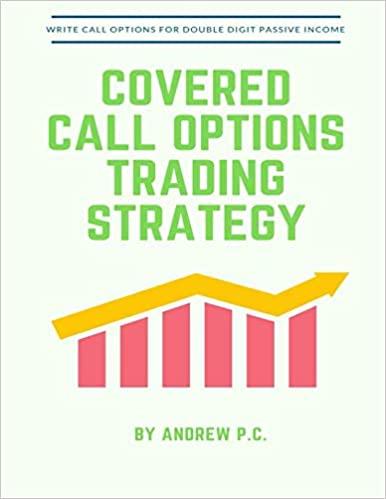Question
PROPOSAL A Financial Proposal A envisages generation of electricity from water - a hydro-electric project. The useful economic life of this project is estimated to
PROPOSAL A Financial Proposal A envisages generation of electricity from water - a hydro-electric project. The useful economic life of this project is estimated to be 60 years. This project will generate 50,000 million (mn) units of electricity annually. Electricity will be sold to the public at a tariff of 10 cents per unit. The annual operation and maintenance costs are expected to be 2.5 percent of the capital cost. Economic (Social) The economic (social) costs and benefits for this project must be estimated from Figure 1. PROPOSAL B Financial Proposal B is a thermal project - electricity will be generated from coal. The annual operating costs for this project are estimated to be 5 percent of the capital cost. This project will also have a useful economic life of 60 years. It will generate 50,000mn units of electricity annually. The electricity from this project will be sold at 12 cents per unit. Economic (Social) The economic (social) costs and benefits for this project can be estimated from Figure 2. Assumptions (common to both proposals) All capital costs are incurred at time t=0 (i.e., ignore project construction time). Electricity generated, electricity tariffs, annual costs and the discount rate remain constant throughout the economic lives of the projects. The economic (social) costs and benefits must be estimated exclusively from Figures 1 and 2. The costs and benefits represented in these figures are all inclusive, i.e., total costs include capital and operating costs and the demand curves reflect of all benefits provided by the projects. For the purpose of estimating economic (social) costs and benefits, assume that the market structure for electricity sector is currently a monopoly. It is expected to remain so for the first twenty years of the project life-span. The government however proposes to transform this market initially into an oligopoly (for the years 21 to 40) and eventually competitive (years 41-60). While it is difficult to precisely estimate the price and quantity outcomes that will prevail in an oligopoly market, the economic brains of the time have suggested that these outcomes are as shown by dotted lines in Figures 1 and 2. The real and apparent annual discount rates are 10 and 15 percent, respectively. Further, the economic and financial discount rates are assumed to be the same. 

Answer following Questions
Please summarize your results in the table below: (9 Marks)
| Financial | Economic | ||
| Proposal A Proposal B Proposal A Proposal B | |||
| NPV | |||
| IRR | |||
| PB | |||
| B/C | |||
| Life Cycle Cost | |||
| Equivalent Annual Cost | |||
| Consumer Surplus | |||
| Producer Surplus | |||
| Total Surplus | |||
| Deadweight Loss |
Note: NPV; Equivalent Annual Cost; Life Cycle Cost; and Surpluses (Consumer, Producer, and Total)and Deadweight Loss - must be rounded off to the nearest billion dollars (i.e., no decimals), and IRR and PB - to the nearest whole percents and years (i.e., no decimals), and B/C - to one decimal point only. 1. Which proposal will you recommend from investors perspective? (2 Marks) A B Either Neither Why? Because _____________________________________________________________ ____________________________________________________ (no more than 10 words) 49003-Assign2s2018-answer template Page 2 of 3 2. From a financial perspective, will you select any of these projects on the basis of the indicator of Consumer Surplus? (2 Marks) Yes No Why? Because _____________________________________________________________ ____________________________________________________ (no more than 10 words) 3. Will your recommendation, based on economic perspective, change if the opportunity cost of money is zero? (2 Marks) Yes No Why? Because _____________________________________________________________ ____________________________________________________ (no more than 10 words) 4. In Figure 2, will the response of demand to changes in prices in the range of 9 to 12 cents per unit be: (2 Marks) Elastic Inelastic Why? Because _____________________________________________________________ ____________________________________________________ (no more than 10 words) 5. Will your recommendation, based on economic perspective, change if due to unanticipated global financial turmoil there is hyperinflation after the first ten years of the projects life spans? (2 Marks) Yes No Why? Because _____________________________________________________________ ____________________________________________________ (no more than 10 words) 49003-Assign2s2018-answer template Page 3 of 3 6. Will your recommendations, based on economic perspective, change if the government succeeds in converting the monopoly market, into an oligopoly market, but is unable to transform oligopoly market into a competitive market (i.e., the market stays as an oligopoly for the last 40 years of project life-spans)? (3 Marks) Yes No Why? Because _____________________________________________________________ ____________________________________________________ (no more than 10 words) 7. How much subsidy (expressed in present value terms) will the government need to provide for Proposal B in order to encourage the producer to sell electricity at the competitive market prices throughout the 60 year project duration? (3 Marks)
Figure 1 Economic (Social) Costs and Prices: Proposal A 12 agial Cents/unit P = MC=ATC 4 Demand 30,000 35,000 40,000 Output (Million units/year) Economic (Social) Costs and Prices: Proposal B Figure 2 Figure 1 Economic (Social) Costs and Prices: Proposal A 12 agial Cents/unit P = MC=ATC 4 Demand 30,000 35,000 40,000 Output (Million units/year) Economic (Social) Costs and Prices: Proposal B Figure 2Step by Step Solution
There are 3 Steps involved in it
Step: 1

Get Instant Access to Expert-Tailored Solutions
See step-by-step solutions with expert insights and AI powered tools for academic success
Step: 2

Step: 3

Ace Your Homework with AI
Get the answers you need in no time with our AI-driven, step-by-step assistance
Get Started


